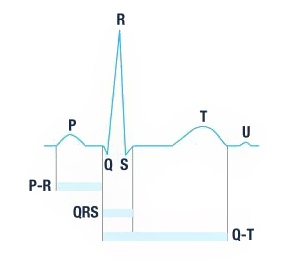Author: STMicroelectronics Adriano Basile, Fabrizio Librizzi
Foreword
Improving the quality of life is of course the beginning of changing the way we live. However, monitoring health parameters and specific nutritional programs can help reduce the incidence of high blood pressure, dyslipidemia and obesity. Lifestyle change is equally beneficial for young people. The American College of Sports Medicine (ACSM) publishes some international healthy lifestyle guidelines and is implemented in US high schools. If you don't change your way of life, when you step into middle age, the amount of exercise in the week will be pitiful. In fact, middle-aged women with less than one hour of exercise per week have twice the risk of dying from cardiovascular disease than women of the same age who are more active (see Figure 1).
Since monitoring lifestyle and health parameters has become an important factor in the correct diagnosis of the disease, this article will introduce a new instrument that can monitor the heart and its indirect parameters.

Figure 1: ACSM recommends a high quality of life
Health care expenditures are increasing in countries all over the world. The increasingly popular chronic disease and infectious disease prevention and treatment programs are issues that governments need to solve, which makes the medical health of the department develop in the direction of so-called “patient health and self-careâ€. The patient is almost no longer passively accepting the doctor's advice, but under the guidance of the doctor, he is better able to take care of himself. This creates a lifestyle that is advocated by many health-conscious government agencies and independent organizations.

Figure 2: Bed ECG Monitoring System
This new vision applies to a growing number of health stations (PoCs). Health stations are located in towns and villages in cities and are considered the first entrance to public health organizations. People want to consult medical staff with rapid diagnostic tools at health stations. Among them, ECG monitor (ECG) is the most basic diagnostic instrument. The ECG monitor of the health station is usually a computer-assisted ECG monitor. This model uses the analog subsystem of the traditional bed ECG system (Fig. 2) to process and display data using a PC. In this hardware configuration, the PC plays two important roles: saving and retrieving ECG data; managing the data collected by the system.
Recent studies have shown that continuous diagnostic feedback data can enhance people's will to continue to improve their lifestyle. Health telemonitoring is clearly a solution for individual doctors to stay in direct contact with patients.
ST's D-ECG ECG monitor solution
The electrode is a sensor that collects ECG data (Figure 3), converting the ion current in the living biological tissue into an electronic current that can be detected by the analog front end of the electronic medical instrument. In order to understand the causes of bioelectrical signals such as electrocardiograms, we should consider the following elements:
1. The electrical activity of cardiomyocytes; the extracellular potential caused by the electrical activity of a single cardiomyocyte placed in a homogeneous water bath medium with the same body fluid composition;
2. Extracellular potential caused by electrical activity of a large amount of myocardial tissue placed in a large conductive medium containing bodily fluid ionic components;
3. The relationship between these extracellular potentials and the total electrical activity recorded on the body surface, the ECG signal

Figure 3: ECG waveform
The frequency of ECG signals important for diagnosis is between 0.05-250 Hz. To ensure perfect capture of the signal, the analog front end must be able to amplify the ECG signal, filtering out biological signals (eg, power line noise) and unrelated biological interference ( For example, EMG), and integrates a high gain differential amplifier with excellent common mode rejection ratio (CMMR) in the 80 – 120 dB range.
Within the ECG monitoring system, computer memory, displays, and printers are used to store and display ECG data. The electrodes of the ECG monitor are usually fixed to the patient's body (see Figure 2). These electrode connections are called lead wires (I, II, III, aVR, aVL, aVF, V1, V2, V3). , V4, V5, V6).
E.g:
· Lead I = RA – LA (right arm – left arm)
· Lead II = RA – LF (right arm – left foot)
· Lead III = LA – LF (left arm – left foot)
· aVR is obtained on the right arm:
· aVL is obtained in the left arm:
· aVF is obtained in the left leg:
· V1 is the difference between the electrode placed at the fourth intercostal space on the right edge of the sternum and VWCT
This article is selected from the Electronic Consumers Network September "Smart Medical Special" Change The World column, please indicate the source! 
Qunsuo are dedicated in handheld PDA, we have years of accumulation in this industry. We can provide handheld Barcode Scanner Pda, PDA with built in printer and so on. All of our PDA provide with demo app and free SDK, supporting our customers for use easily. We can provide our customers prompt after-sales service about any technical supports. Our PDA support many functions, including RFID reader, NFC reader, Barcode Scanner, UHF reader, fingerprint scanner, IC card reader, PSAM and etc. If you have any PDA OEM/ODM requirements, welcome ton contact us for more details!

PDA OEM/ODM
Oem/Odm Pda Barcode Scanner,Oem/Odm Industrial Pda,Oem/Odm Handheld Pda,Oem/Odm Rugged Pda
Shenzhen Qunsuo Technology Co., Ltd , https://www.qsprinter.com